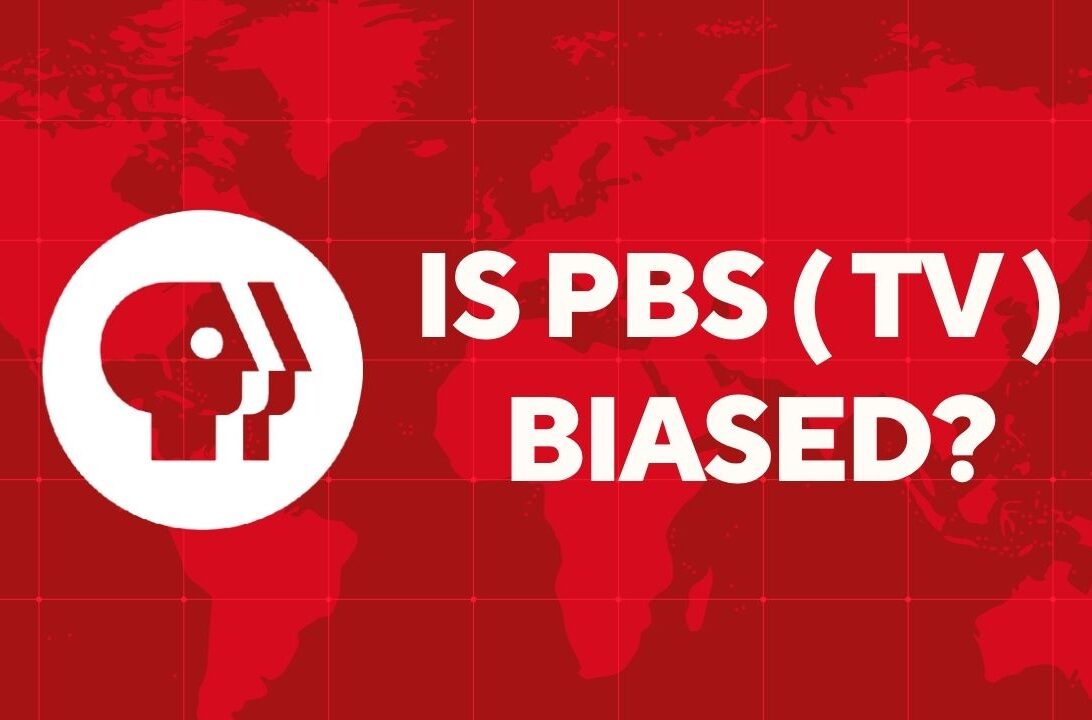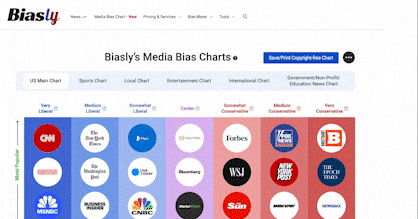
The Public Broadcasting Service (PBS) is one of the most recognizable and longstanding media institutions in the United States. Known for its commitment to education and public service, PBS has built a reputation as a trustworthy source of information. But in a politically divided landscape where questions of media bias dominate public discourse, it’s worth asking: Is PBS truly as neutral and reliable as many believe?
This article investigates PBS’s origin, role in American society, history of coverage, allegations of bias, and how it compares with other major media outlets. We’ll also consider how tools like Biasly’s Media Bias Ratings and Bias Meter can help audiences critically evaluate PBS and other sources of news.
The Origins of PBS: A Mission Rooted in Public Service
PBS traces its roots to the Public Broadcasting Act of 1967, a pivotal piece of legislation that established the Corporation for Public Broadcasting (CPB). Funded by taxpayer dollars, the CPB was created to ensure that public media served the interests of the American people—not corporate advertisers. Two years later, PBS was formally launched in 1969 by Hartford N. Gunn Jr., Kenneth A. Christiansen, John W. Macy Jr., and James Day. NPR (National Public Radio) followed shortly after in 1970.
PBS operates as a program distributor for local public television stations, many of which are independently owned. While NPR produces and owns its content, PBS primarily serves as a centralized hub for sharing educational and cultural programming nationwide.
The network’s mission is explicitly educational. According to its charter, PBS seeks to “educate, inspire, entertain, and express a diversity of perspectives” to empower individuals and strengthen American society. This mission suggests a strong ethical foundation—but one that invites scrutiny about whether those goals are consistently met.
PBS’s Role in U.S. Society
For decades, PBS has offered a unique media model that differs sharply from commercial broadcasters. Programs like Sesame Street, Frontline, NOVA, and PBS NewsHour have become cornerstones of public discourse and learning. The network’s emphasis on civil, in-depth reporting and children’s educational content has earned it wide acclaim.
Unlike commercial networks that rely heavily on advertising, PBS draws funding from a mix of sources—public donations, grants, foundations, and a limited amount of federal funding. This model positions PBS as more independent from corporate influence but opens the door to claims of ideological bias depending on who funds or produces its programming.
Moments That Defined PBS’s Reputation
PBS solidified its status as a reputable news organization through high-profile events. In 1973, it aired the Watergate hearings in full—a move many hailed as a victory for transparency. Anchor Jim Lehrer explained their philosophy succinctly: “We think these hearings are important… and it’s important that you get a chance to see the whole thing and make your own judgments.”
This commitment to raw, uninterrupted coverage signaled a deep respect for the viewer’s intellect and need for objectivity. The approach was replicated in future moments, like the 1987 coverage of President Reagan’s Berlin Wall speech or the Tiananmen Square protests in 1989.
The MacNeil/Lehrer NewsHour, which debuted in 1975, further elevated PBS’s reputation. Known for its balanced tone and long-form interviews, it became the gold standard for civil discourse on television.
Fostering Civil Debate: The Legacy of Firing Line
One of PBS’s most iconic programs, Firing Line, epitomized its dedication to ideological diversity. Hosted by conservative intellectual William F. Buckley Jr., the show ran for over 30 years and featured guests from across the political spectrum—liberals, socialists, communists, libertarians, and more.
Buckley’s debates with figures like Noam Chomsky and Black Panther leaders reflected a nuanced, respectful approach to journalism that is rare today. He provided his opponents time and space to articulate views, setting a tone of intellectual rigor that PBS programs continue to emulate.
PBS and Educational Programming
PBS isn’t just about political coverage. It has shaped generations through children’s shows like Mr. Rogers’ Neighborhood, Sesame Street, Arthur, and Reading Rainbow. These programs, widely recognized for promoting social-emotional development, early literacy, and empathy, have helped define the network’s reputation as a public good.
Educational programs like NOVA and Nature have also elevated public understanding of science and the environment. Their success shows how media can both inform and inspire, offering content that is both accessible and intellectually robust.
Such programming helps bolster PBS’s reliability score on platforms like Biasly, which evaluates accuracy, source credibility, and factual reporting.
The Controversies: Bias or Balance?
Despite its accomplishments, PBS has faced allegations of left-leaning bias—especially from conservative politicians and commentators. One notable example was the backlash to a Postcards from Buster episode that featured a lesbian couple. Critics argued that PBS was promoting progressive values under the guise of children’s education.
During Kenneth Tomlinson’s tenure as CPB chairman in the early 2000s, he attempted to introduce more conservative perspectives into PBS programming. Shows hosted by Tucker Carlson and Wall Street Journal columnist Paul Gigot were created to balance perceived liberal bias—but these efforts were short-lived and controversial.
These developments led to questions about political interference, journalistic autonomy, and the nature of “balance” in public media.
Criticism from the Left
Interestingly, PBS hasn’t only been criticized by conservatives. Progressive voices have also raised concerns—though of a different nature. Some argue that PBS bends too far toward neutrality, giving undue airtime to views that lack factual merit under the guise of balance.
Others point to the network’s reliance on corporate sponsors for certain programs. For example, PBS NewsHour has received funding from fossil fuel companies and pharmaceutical giants, which has drawn skepticism from climate activists and healthcare reform advocates.
This cross-spectrum criticism indicates that PBS walks a tightrope—striving to please a politically diverse audience while holding onto its editorial independence.
Comparing PBS with Other Broadcasters
How does PBS stack up against other American media outlets like CNN, Fox News, or MSNBC? According to Biasly’s media bias ratings, CNN leans moderately liberal, Fox News is strongly conservative, and MSNBC sits further to the left.
PBS, by contrast, often lands near the center or slightly left of center. Its long-form, issue-based approach sets it apart from the highly sensational or partisan coverage typical of cable networks.
Its public model also resembles international counterparts like the UK’s BBC and Canada’s CBC. Like PBS, both are publicly funded and aim to inform citizens rather than entertain or attract advertisers. These similarities suggest that public media around the world shares a unique responsibility to avoid bias while promoting informed discourse.
Tools to Evaluate Media Bias in PBS
If you’re unsure whether PBS aligns with your expectations of journalistic neutrality, tools like Biasly’s News Bias Checker and Bias Meter can help. These tools analyze tone, diction, source credibility, and ideological leanings in news content.
You can also explore Biasly’s News Check Chrome Extension to evaluate bias and factual reliability while browsing news online.
We can also see where PBS stands against other sources in Biasly’s Media Bias Chart.
These tools empower users to think critically about what they read and watch, helping them navigate the murky waters of media influence.
PBS’s Digital Shift and Modern Audience
Like most legacy media, PBS has had to adapt to a digital-first world. Its online platform, PBS.org, offers full episodes, articles, and educational content for children and adults. It also has a strong presence on YouTube and streaming apps, expanding its reach to younger, tech-savvy audiences.
However, this modernization has its own challenges. As competition for views intensifies, the temptation to produce more sensational content grows. Whether PBS can maintain its commitment to civility and nuance in this landscape remains to be seen.
Final Verdict: Is PBS Biased?
PBS remains one of the more balanced and responsible media outlets in the United States, especially when compared to commercial news networks. Its structure, funding model, and long-standing mission favor education and public discourse over profit and partisanship.
That said, no outlet is free from criticism. While PBS strives for neutrality, its programming choices—like all editorial decisions—reflect certain values and priorities. And like all media consumers, we must assess its content critically and remain aware of how bias can manifest.
Understanding media bias, especially public media bias, is a vital skill. Whether you’re watching PBS or any other outlet, using tools like Biasly’s Media Bias Chart can help ensure you get the full story.























